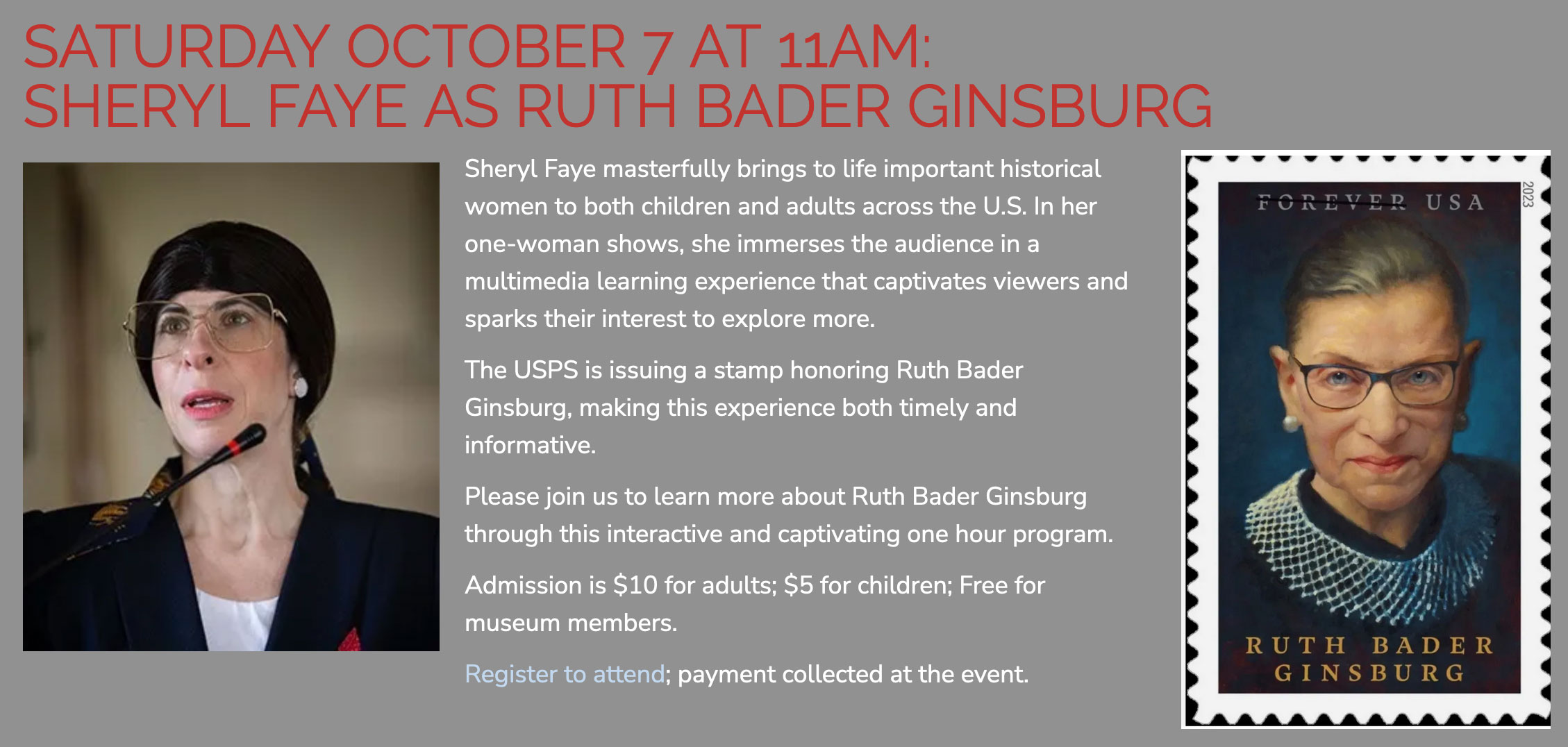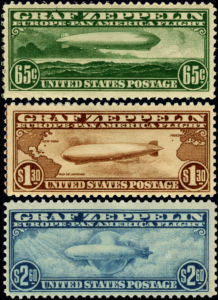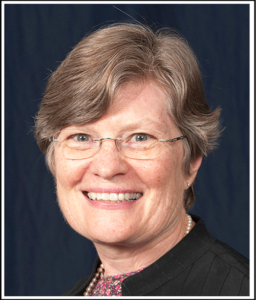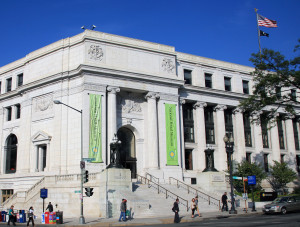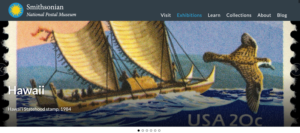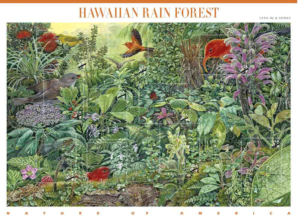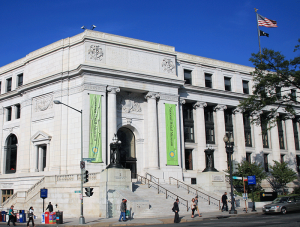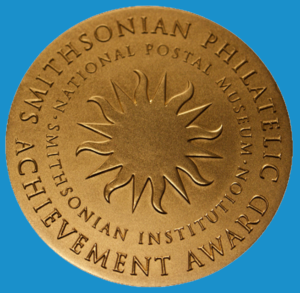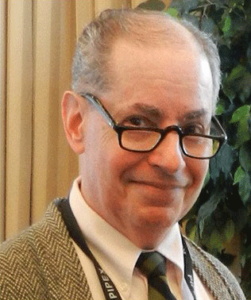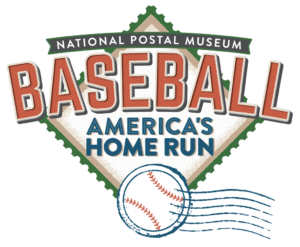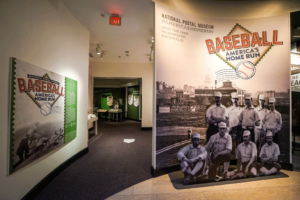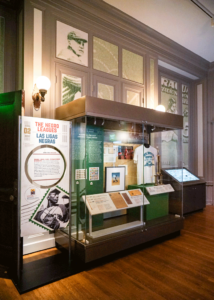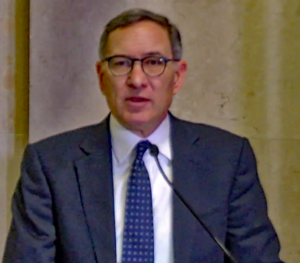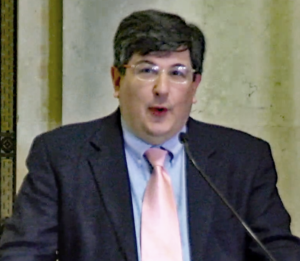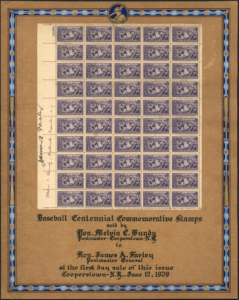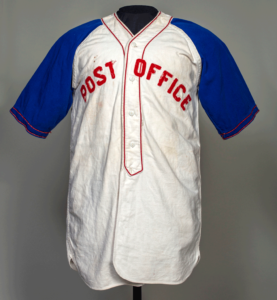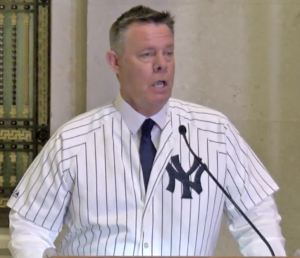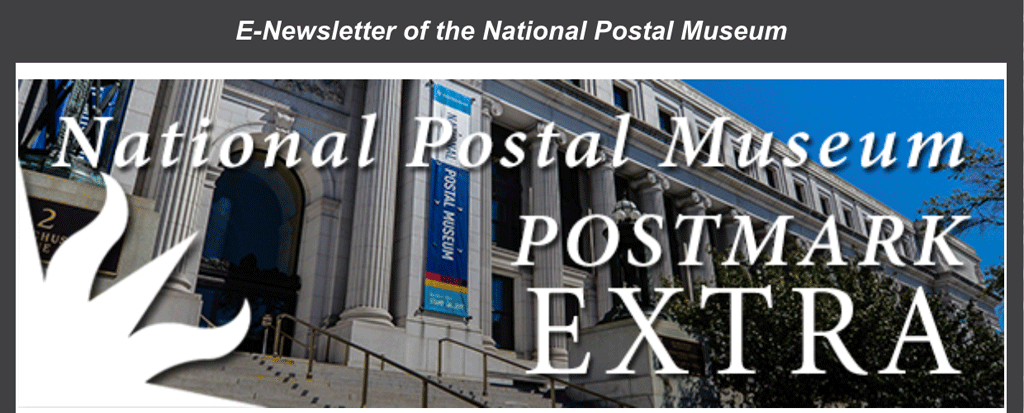[press release] [click on any of the pictures for larger versions]<
National Postal Museum Announces Smithsonian Philatelic Achievement Award Recipients
John McClure Hotchner, Donald J. Sundman and Scott R. Trepel Will Receive Award Nov. 4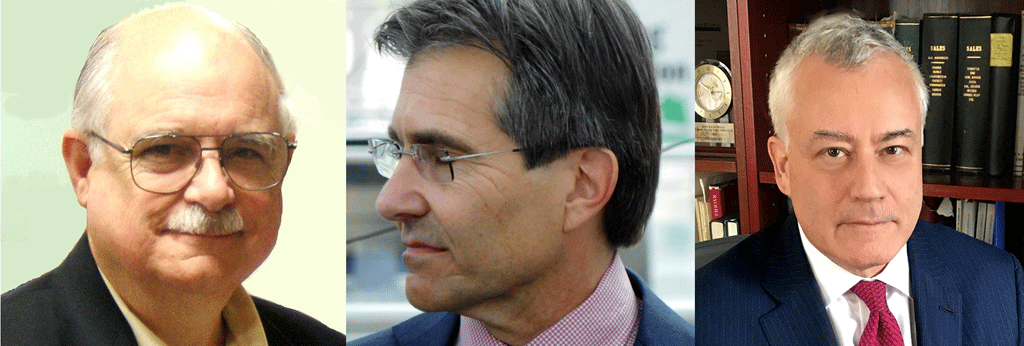
The Smithsonian’s National Postal Museum has announced the 2023 Smithsonian Philatelic Achievement Award recipients, John McClure Hotchner, Donald J. Sundman and Scott R. Trepel. They will be honored at a gala at the museum Nov. 4.
The Smithsonian Philatelic Achievement Award (SPAA) was established in 2002 to honor and celebrate living individuals for outstanding lifetime achievement in the field of philately. This achievement may include original research that significantly advances the understanding of philately, exceptional service to the philatelic community or sustained promotion of philately to the benefit of current and future collectors.
“The National Postal Museum is honored to present this esteemed 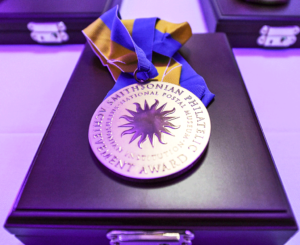 award to these prominent and influential individuals,” said Elliot Gruber, director of the museum. “Their lifetime achievements in the field of philately embody the essence of this award.”
award to these prominent and influential individuals,” said Elliot Gruber, director of the museum. “Their lifetime achievements in the field of philately embody the essence of this award.”
The SPAA award medallion (right) is a 3-inch, gold-plated bronze disc depicting a sunburst with eight straight and eight wavy rays. Derived from the family coat of arms of James Smithson, founding benefactor of the Smithsonian Institution, the sunburst became the Institution’s official seal June 3, 1966, and is incorporated into the official flag flown by Smithsonian facilities and Smithsonian-sponsored expeditions throughout the world. As such, it is a universally recognized symbol of enlightenment and learning that links the Smithsonian’s history with its future. The medallion is suspended from a grosgrain neck ribbon in Smithsonian blue and yellow.
“I could not be more delighted that the Smithsonian Institution has chosen to honor these three impressive philatelists,” said Charles Shreve, chair of the museum’s Council of Philatelists. “Each has contributed, in unique ways, to the betterment and promotion of stamp collecting—one of the greatest and most enjoyable hobbies in the world.”
A special website provides information about the SPAA gala event, including information on purchasing tickets to attend the event.
About the recipients:
 John McClure Hotchner, RDP, FRPSL, United States (born 1943), has been a collector since age 5, with wide-ranging interests that include numerous country and thematic studies. Selections from World Rarities and Uniquities, his 400-page exploration of the breadth and depth of philately, have been shown in numerous courts of honor at the American Philatelic Society, World Series of Philately and international shows. Hotchner is a competitive exhibitor and an accredited philatelic, literature and chief judge who has headed juries at numerous national and international shows.
John McClure Hotchner, RDP, FRPSL, United States (born 1943), has been a collector since age 5, with wide-ranging interests that include numerous country and thematic studies. Selections from World Rarities and Uniquities, his 400-page exploration of the breadth and depth of philately, have been shown in numerous courts of honor at the American Philatelic Society, World Series of Philately and international shows. Hotchner is a competitive exhibitor and an accredited philatelic, literature and chief judge who has headed juries at numerous national and international shows.
As a member of the U.S. Postal Service’s Citizens’ Stamp Advisory Committee 1998–2010, Hotchner helped select more than 1,700 U.S. stamps—steadfastly championing subjects that he felt highlighted American cultural, historical and scientific achievements. A member of the National Postal Museum’s Council of Philatelists 2002–2017, he was named to emeritus status on his retirement. He led the American Philatelic Society for 16 years in numerous capacities, including the board of vice presidents (1991–1993), director at large (1994–1997) and president (1997–1999). He has served on the boards of more than 20 other organizations including Stamps for the Wounded, which introduces wounded veterans to philately as a form of occupational therapy.
Hotchner’s reputation as a writer, editor and researcher has been established through thousands of columns and articles published in a wide number of philatelic magazines. These include feature articles for Linn’s Stamp News, where his “U.S. Notes” column has appeared in virtually every issue for 32 years; U.S. Stamp News; The Philatelic Exhibitor, which he edited from 1986 to 2010; and The American Stamp Dealer and Collector.
Hotchner has received the United States Stamp Society’s Walter Hopkinson Award (1984); the Luff Award for Outstanding Service to the American Philatelic Society (2004); the Collectors Club of New York’s Alfred F. Lichtenstein Memorial Award for Distinguished Service to Philately (2005); the American Association of Philatelic Exhibitors’ Bernard Hennig Award for Excellence in Judging (2008); the U.S. Philatelic Classics Society’s Distinguished Philatelist Award (2008); the St. Louis Stamp Expo’s Elizabeth C. Pope Award for Lifetime Contributions to Philately (2013); and the American Philatelic Society’s Charles J. Peterson Lifetime Achievement Award for Philatelic Literature (2013). He was elected to the Writers’ Unit Hall of Fame in 1999 and invited to sign the Roll of Distinguished Philatelists in 2017.
 Donald J. Sundman, FRPSL, United States (born 1954), is a lifelong stamp collector, second-generation professional philatelist and tireless promoter of stamp collecting. He became general manager of Mystic Stamp Company in 1974 at the age of 19 and was named president in 1980. From paper catalogues to a “This Day in History” mobile phone app launched in July 2015, Sundman’s marketing has popularized stamp collecting and made it accessible to beginning collectors.
Donald J. Sundman, FRPSL, United States (born 1954), is a lifelong stamp collector, second-generation professional philatelist and tireless promoter of stamp collecting. He became general manager of Mystic Stamp Company in 1974 at the age of 19 and was named president in 1980. From paper catalogues to a “This Day in History” mobile phone app launched in July 2015, Sundman’s marketing has popularized stamp collecting and made it accessible to beginning collectors.
In 1985, he purchased stamps from the partial pane of $1 Rush Lamp inverts, and later discovered that the sheet was originally purchased by employees of the Central Intelligence Agency, making worldwide news. In 1998, he purchased the only privately held copy of the 1¢ Z Grill, which he later traded for the unique Inverted Jenny plate number block. He exhibited these rarities frequently at stamp shows, helping to boost attendance and garner positive press coverage for philately. Sundman assisted the American Philatelic Research Library in recovering one of the stolen stamps (position 76) from its ‘McCoy block’ of Inverted Jenny stamps, offering a reward for its return in 2014. (The photo above is from NYC World Stamp Expo 2016.)
He joined the National Postal Museum’s Council of Philatelists in 1995 and was elected chairman in 2004, a position he held until 2021. He endowed the museum’s annual Maynard Sundman Lecture Series in 2000, along with his older brother David, to honor their father. He was a major sponsor of the National Postal Museum’s William H. Gross Stamp Gallery. He has presented numerous items to the National Philatelic Collection, including the famed 1979 $1 ‘CIA Invert’ he played a key role in uncovering.
Sundman became a trustee of the Philatelic Foundation in 2006 and has served as its secretary and vice-chairman. He has sponsored more than 8,000 new American Philatelic Society members and received the Society’s Luff Award for Outstanding Service in 2010. He is a member of the Club de Monte-Carlo de l’Elite de la Philatélie and was elected a Fellow of the Royal Philatelic Society London in 2019. He co-authored (with Janet R. Klug) 100 Greatest American Stamps (2007).
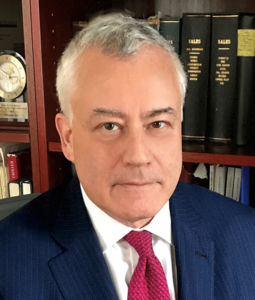 Scott R. Trepel, FRPSL, United States (born 1962), began his philatelic career right out of high school, working for Stanley Gibbons and Christie’s/Robson Lowe in New York. He joined the Robert A. Siegel firm as a partner with its founder in 1992. As president of Robert A. Siegel Auction Galleries, he has organized innumerable famous name sales and held the gavel when many records were broken, including the Inverted Jenny plate block at $2.97 million, the Brazil Pack strip at $2.185 million, the Hawaiian 2¢ Missionary cover at $2.242 million, the Inverted Jenny single at $1.35 million and the 1¢ Z Grill at $935,000.
Scott R. Trepel, FRPSL, United States (born 1962), began his philatelic career right out of high school, working for Stanley Gibbons and Christie’s/Robson Lowe in New York. He joined the Robert A. Siegel firm as a partner with its founder in 1992. As president of Robert A. Siegel Auction Galleries, he has organized innumerable famous name sales and held the gavel when many records were broken, including the Inverted Jenny plate block at $2.97 million, the Brazil Pack strip at $2.185 million, the Hawaiian 2¢ Missionary cover at $2.242 million, the Inverted Jenny single at $1.35 million and the 1¢ Z Grill at $935,000.
Trepel’s auction catalogs incorporate a high level of research, including census data and historical background for the items offered, that have garnered philatelic literature awards. He has published numerous research articles in well-respected journals and edited the 1869 section of The Chronicle of the U.S. Classic Issues for many years. He co-authored (with Ken Lawrence) Rarity Revealed: The Benjamin K. Miller Collection for the Smithsonian National Postal Museum and The New York Public Library. He has also self-published books on the City Despatch Post and the Pony Express.
For his research work in U.S. philately, the U.S. Philatelic Classics Society has awarded Trepel the Dr. Carroll Chase Cup on four separate occasions (1989, 1994, 2003 and 2006). He has also won the society’s Mortimer L. Neinken Award (1987) and Distinguished Philatelist Award (1996).
About the Smithsonian’s National Postal Museum
The National Postal Museum is devoted to presenting the colorful and engaging history of the nation’s mail service and showcasing one of the largest and most comprehensive collections of stamps and philatelic material in the world. It is located at 2 Massachusetts Ave. N.E., Washington, D.C., across from Union Station. The museum is open daily from 10 a.m. to 5:30 p.m. (closed Dec. 25). For more information, visit postalmuseum.si.edu. Follow the museum on Facebook, Instagram, Twitter, Pinterest and YouTube.
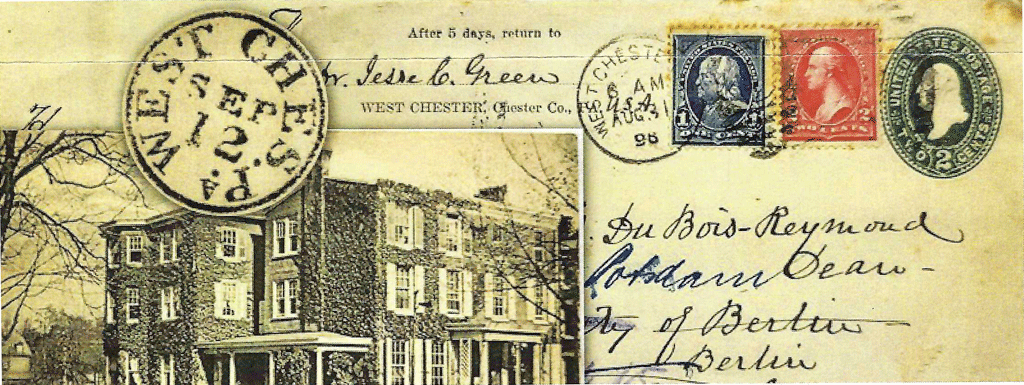 The Chester County History Center (CCHC) presents the special exhibit Letters and Post Cards: 1820-1920 Chester County with a collection of postal history and picture post cards that illustrate U.S. postal delivery from and to West Chester from 1820 to 1920. This exhibit presents the rare opportunity to view hundreds of examples from the exclusive collection of renowned philatelist and guest curator William Schultz.
The Chester County History Center (CCHC) presents the special exhibit Letters and Post Cards: 1820-1920 Chester County with a collection of postal history and picture post cards that illustrate U.S. postal delivery from and to West Chester from 1820 to 1920. This exhibit presents the rare opportunity to view hundreds of examples from the exclusive collection of renowned philatelist and guest curator William Schultz.
